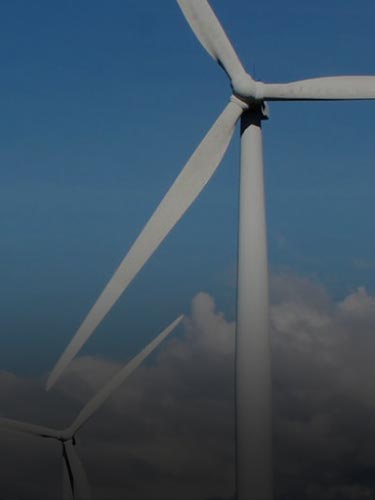
Lenders reviewing finance applications for clean energy assets can learn lessons from green banks.
TL;DR
-
Green banks help traditional lenders invest in clean energy projects and overcome hesitancy.
-
In the U.S., 99.62 percent of green bank loans are repaid to the lender in full.
-
The first American federal green bank is being created and will get billions of dollars worth of projects flowing.
The fight against climate change is an expensive one. Many businesses want to start their clean energy projects, but have difficulty committing capital budget to buy the assets they need.
Still, the need for funding isn’t going away; experts predict $1.6–3.8 trillion in annual spending through 2050 to meet global climate change objectives.
Lenders who tap into this demand will take advantage of the most valuable business opportunity of our time.
Clean energy projects need greenbacks, and increasingly these are coming from green banks.
By bringing public and private funding together, green banks fight climate change, offering low-cost capital to clean energy projects. The two largest target markets for these banks are commercial and industrial (C&I) solar projects (89 percent of banks fund these types of projects) and C&I energy efficiency projects (funded by 78 percent of banks).
While many financial institutions are embracing sustainability, green banks exclusively finance low-carbon projects. Similarly, many banks issue green bonds—financial instruments that support clean energy projects—but some of the banks providing these also continue to invest in fossil fuels.
Specifically, green banks are “focused institutions, created to maximize clean energy adoption,” explains the Coalition for Green Capital.
This focused approach accelerates the transition to the green economy. The growth of green banks globally represents an exciting development in the financial world.
“We have to have adoption go at an accelerated rate in order to reduce emissions […] We have to have the market go faster than it would otherwise go. We just don’t really have the option [to] delay,” says former Federal Communications Commission (FCC) chair and Coalition for Green Capital co-founder, Reed Hundt.
Green banks play an important role in accelerating the adoption of clean technology. Here are three things traditional lenders can learn from green banks as they approve more energy projects.
1. Green banks help traditional lenders manage risk and find new opportunities.
Green banks are catalysts for low-carbon projects and occupy a unique role in the financial market. Typically public or quasi-public organizations, green banks initially rely on government funding before becoming self-sufficient.
By filling gaps in the market, green banks alleviate investor hesitancy due to limited precedent, small deal sizes, challenges evaluating technology risk, or underwriting complexities.
Beyond buoying private sector confidence, green banks also provide advisory and technical assistance to other, less specialized banks.
Being the first to invest capital in green projects means these banks reduce risks for private lenders.
As NYSERDA chair, Richard Kauffman explains:
“You want to think about a green bank as being a double incubator. It can both incubate financing structures and also demonstrate that by scaling up a loan product, it can become financially attractive for the private sector.”
2. Clean energy projects are more likely to repay their debt.
With a wide range of financial instruments from debt and equity financing, to grants, credit enhancement, and guarantees, green banks make it easier for projects to secure funding and establish a record of repayment.
To help customers, green banks may offer lower interest rates, extended term lengths, or no-money-down agreements. This flexible support boosts repayment rates.
Specifically, 99.62 percent of green bank loans in the U.S. have been repaid to the lender. This makes private lenders more confident and willing to offer their capital. For example, $2 billion worth of U.S. green bank funds marshaled $7 billion in investment in 2020.
Similarly, the Green Bank Network’s (founded in 2015) nine members across eight countries have supported $135.9 billion in projects through mid-2022. Network member banks report a median leverage ratio of 2.3:1.
In other words, for every $1 invested in low-carbon projects, more than $2 of private money was attracted.
3. Clean energy projects are a win for a lender’s sustainability story.
State-backed green banks like New York’s have achieved much over the past decade. Founded in 2013, the NY Green Bank reports reducing 17,500 tonnes of carbon dioxide equivalent (CO2e) per $1 million invested.
To date, the bank has invested $1.7 billion, reducing 30.6 megatonnes of CO2e (equivalent to 6.6 million cars off the road), and saving 2.3 million megawatt hours (MWh) (enough energy to power 205,000 homes).
These are impressive numbers, but they are dwarfed by the work that needs to be done to reach the Biden administration’s goal of net-zero by 2050.
Moreover, the existing patchwork of smaller banks doesn’t have enough capital to meet demand. There’s $21 billion worth of backlogged clean energy projects in the pipelines of state and local green banks alone.
Federal support is needed to streamline the process and make green capital available across the United States.
The Greenhouse Gas Reduction Fund is set to become the first U.S. national green bank, thanks to an initial fund of $27 billion. Passed as part of the Inflation Reduction Act, the fund has enormous potential to turbocharge America’s climate change fight.
According to Jeff Schub, executive director at the Coalition for Greener Capital, Biden’s green bank could deliver 20 percent of all emissions needed to meet Washington’s 2050 climate goals by 2030.
Connecting clean energy projects to low-cost capital bolsters the fight against emissions and energy bills. We have the technology we need, but too many projects never get off the ground due to funding issues.
EnPowered brings lenders more projects.
As more finance applications for energy-efficiency projects cross their desks, traditional lenders can learn a lot from green banks. While clean energy projects are a relatively safe loan to approve, EnPowered Payments provides lenders with additional assurance to minimize risk.
By leveraging a portion of their energy savings, Payments makes it easier for businesses to repay through their utility bill, all while staying cash-flow positive.
With repayment tied to a customer’s electricity bill, Payments leverages utility collection to ensure lenders are paid. This works as an added level of assurance beyond existing collection options, such as pre-authorized debit (PAD).
Ready to learn more? Reach out today to discover how EnPowered’s innovative on-bill platform connects lenders with low-risk energy-efficiency projects.





